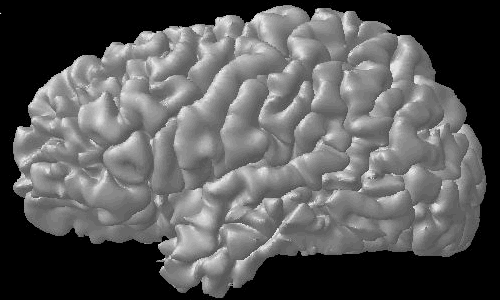
V1 response to aligned and misaligned image elements
This is motivated by two works. Altmann et al, Current Biology 2003 report increased V1 response when observers detect a snake of aligned Gabors in a field of random Gabors. Murray et al, PNAS 2003 report decreased V1 BOLD in response to increased perceptual organization. So which is it?
The task and stimuli are quite simple. Four stimuli are presented in an event-related design while subjects engage in a yes/no task -- is the ring present or not. Sometimes the ring (or misaligned ring) is shown in isolation, and sometimes it is embedded in a background of Gabors. Performance is at ceiling.
We localize two regions of interest in V1, corresponding to the ring (blue, at left) and background (orange, at left) and estimate hemodynamic responses in each ROI.
The experiment is simple, but the results are exciting. In the absence of clutter, the V1 response to aligned ring is lower than the response to the circle of randomly oriented Gabors. In the presence of clutter, on the other hand, the trend in V1 is for the opposite result: larger response to the aligned stimuli. This pattern, which reconciles the apparently contradictory findings in the literature, can be predicted by one simple rule: the V1 response is lower when the number of parameters needed to characterize the stimuli is smaller. This is not to say that V1 encodes perceptual simplicity, but it is very satisfying to think that the neural mechanisms of contextual modulation in V1 come around to this simple behavior.
Even more exciting, a similar experiment manipulating alignment of the features of partially occluded objects, with and without background clutter, appears to be producing the same pattern of results!